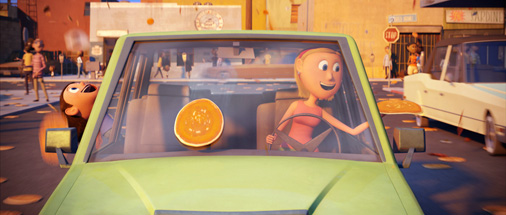|
|
Book vs. Movie: Cloudy With a Chance of MeatballsBy Russ BickerstaffSeptember 22, 2009
The Movie The prospect of turning a very brief picture book into an 81-minute animated film poses an interesting challenge to the filmmaker. In constructing a plot around the brilliantly simple premise, one could go in a variety of different directions. Filmmakers Phil Lord and Chris Miller (who also wrote the short-lived animated show Clone High) decided to go a pretty conventional route with the plot. Rather than treating it as a largely amorphous story designed to capture the imaginations of the children who will be going to see it, Lord and Miller had opted for a more traditional feel-good animated kids film plot that may be endearing and somewhat satisfying, but lacks much of the sense of wonder that makes the book so appealing in the first place. Lord and Miller have dropped the grandfather/grandchildren characters in favor of a loveably wacky young inventor named Flint Lockwood (Bill Hader.) Flint deals with the usual sorts of problems that go along with being a Hollywood scientist, including public ridicule, a solitary life and generally being socially inept. The town he grows up in is an evidently American town on an island in the middle of what appears to be the Atlantic ocean. This is kind of a strange alternative to placing the town in a place east of a great mountain range (the Midwest?). The island town of Swallow Falls is constantly at odds with Lockwood, as it is often the victim of his bizarre inventions. Things turn around as he invents a device that can turn water into food. An accident causes the machine to get launched into a geosynchronous orbit over the town, which is promptly renamed Chewandswallow.
[ View other columns by Russ Bickerstaff ]
[ View other Book vs. Movie columns ]
[ Email this column ]
|

|
|
|

|
Friday, November 1, 2024
© 2024 Box Office Prophets, a division of One Of Us, Inc.


